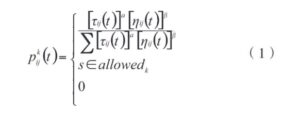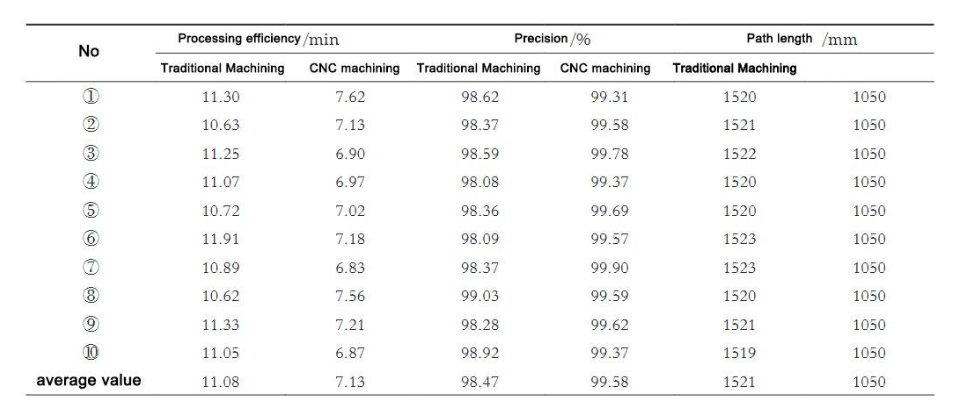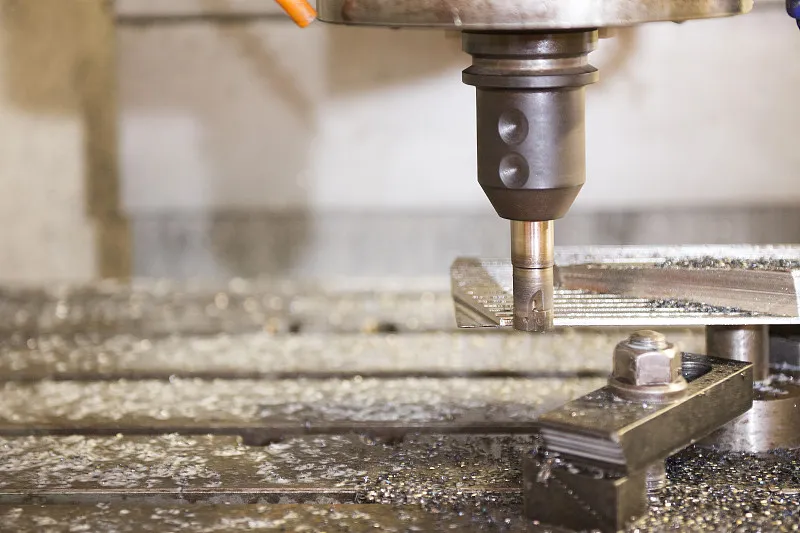Now we attach importance to the design of intelligent agricultural machinery, and also emphasize that the development of intelligent manufacturing is also indispensable.
However, from a practical point of view, the application of CNC technology in the agricultural machinery industry is insufficient.
The automated production level of agricultural machinery is still low.
As a result, it isn’t easy to realize the goal of intelligent manufacturing.
The perspective of intelligent manufacturing is considered to improve the automated production of agricultural machinery.
Application of CNC Technology in Automated Agricultural Machinery Production
This application involves inverse modeling and the ant colony algorithm.
Main points of the application of numerical control technology in the automated manufacturing of agricultural machinery
To facilitate the research, the impeller parts of a potato harvester are taken as the research object.
Based on the impeller’s production and processing needs, inverse modeling and the ant colony algorithm of CNC machining are used.
The main points of the application of CNC technology, based on intelligent manufacturing, are as follows.
Reverse modeling
Product scanning
Reverse modeling of agricultural machinery parts can use laser scanning technology.
Specialized scanners are used to collect point cloud data on the surface of the impeller standard parts.
Based on data acquisition and pre-processing, specific software is used to establish the three-dimensional model of the parts.
This process achieves accurate correspondence between the physical parts and virtual parts.
In the scanning process, the HaloScam scanner is selected to scan the standard impeller parts, and the standard parts of the impeller are placed on the calibration plate to scan the impeller from bottom up.
In the process of scanning the parts, the HaloScam scanner can automatically generate the faces. It stitches the faces according to the data acquired from scanning.
The polygon file is edited in the scanning software during the preliminary stage.
The file is then exported in STL format. GemagicDesign X software is used to pre-process the scanned data.
Reverse modeling
The reverse modeling process consists of four parts, namely isometric interception, contour editing, release modeling, and body deviation analysis.
First, the isometric intercept function of Gemagic Design X software is used to set the cross-section position.
A 3D sketch is created after the isometric intercept. The contour lines obtained in the previous stage are entered into the 3D sketch.
The corresponding curves are selected using the solid conversion function of the software.
Various types of contour lines are edited and extracted.
Finally, the contour editing of the parts is completed.
Secondly, Geomagic Design X software uses the release command to connect the release contour lines to the leading edge of the contour lines.
This connection serves as the release path to complete the release modeling task. After the release model is established, the software performs a body deviation analysis.
Using its automatic deviation analysis function, the software checks for any deviations in the 3D modeling results. A maximum error range is set up to identify discrepancies.
Modifications are then made to the parts where deviations exist until the design solution meets the tolerance requirements of standard parts.
This process enhances the accuracy of 3D modeling.
Tool path planning
The ant colony algorithm is used to set the CNC machine tool’s machining path.
This algorithm determines the optimal path of the tool during impeller machining.
It simulates the foraging behavior of ants to improve impeller machining accuracy and efficiency.
Tool path planning based on the ant colony algorithm mainly combines the principle of ant foraging to determine the optimal tool path based on the number of pheromones left by the ants on the foraging path.
In an ant colony, ants may have multiple paths when foraging. The number of pheromones left on different paths varies.
Most ants prefer the foraging path with more pheromones. This path is the optimal planning path for the tool.
When applying the ACO algorithm, the staff can assume that the state transfer probability of ants moving from node i to node j is

respectively, the amount of pheromone on different paths and the heuristic information of the path, the state transfer probability can be calculated according to the following formula:

Eq. α and β are the information heuristic and expectation heuristic factors, respectively.
α and β can characterize the relative critical level of the amount of information left behind by the ant colony during movement and the relative critical level of the expectation, respectively.
ηij(t) and allowed t are the expectation heuristic function for ants to move from node i to node j at moment t and the nodes allowed to be selected subsequently, respectively.
Usually, the value of ηij(t) is the derivative of the spacing between two nodes.
In ACO algorithm, the inspired information may be affected by the legacy information, to deal with the legacy information, the legacy pheromone can be reprocessed using the following formula:

Where: ρ is the information volatilization coefficient; τij(t+n) is the updated legacy pheromone; Δ τij(t) is the pheromone increment on the ant’s moving path in this loop, and the moving path is denoted by (i, j).
In this loop, the pheromone increment on the ant’s moving path can be calculated by the following formula:

In the formula

is the amount of pheromone left on the path (i, j) by the kth ant in this loop.
In the tool path planning based on ACO algorithm, the

can be used as the optimal path for the tool, and this path can be described using the Ant-Cycle Model (ACM), see Eq:

Where: Q is a constant and L k is the length of the foraging path of the kth ant in this cycle.
The total amount of pheromone released by ants on their path in a cycle can be described by Q in ACO algorithm.
After clarifying the application principle of the ant colony algorithm in tool path planning, the staff can set various parameters.
These parameters include the number of ants, pheromone constants, and heuristic function factors.
Next, initialization matrices are established, such as the shortest path matrix, the average path matrix, the path record table, and the shortest route distance matrix.
The solution space is then constructed, and the initial hole positions for the ants are determined by placing an arbitrary number of ants.
The shortest distance for different ants passing through the machining holes is calculated.
Once all ants have passed through all the holes, the pheromone matrix is updated.
The system then checks whether the tool machining path planning meets the upper limit standard value of the number of iterations.
After meeting the requirements, the tool path planning results are automatically output.
This process generates the shortest machining tool path.
Programming and simulation verification
After determining the tool path in CNC machining, the corresponding CNC machining program is used for the impeller parts.
CNC language is written in the instruction sequence to control the machining behavior of the CNC machine tool.
G code and M code are used to write CNC machining programs.
G code controls operations such as straight line, round work, and diagonal movements of the machine tool.
M code controls operations such as cooling, start and stop, and tool change on the machine tool.
A reasonable setting of the CNC machine tool’s running path and processing parameters is essential.
Based on CNC programming, staff can use CAM software to simulate and verify the CNC machining process.
The CNC machining program is converted into a code that can be recognized by the machine tool.
The CNC machining process of impeller parts is simulated online on the computer.
Machining parameters are comprehensively collected during the simulation process.
The CNC machining program is adjusted appropriately to enhance its feasibility based on simulation and verification.
In the simulation and verification process, improving the precision of parts processing is essential.
Staff can use various methods to optimize tool parameters, such as tool diameter and cutting volume.
This ensures the rationality of the tool planning path while further enhancing machining accuracy.
For example, the maximum diameter of the tool can be calculated based on the minimum radius of curvature of the tool.
Consider the parts processing efficiency and the normal cutting of the machine tool.
Calculate the rotational speed of the spindle of the CNC machine tool.
This helps improve the adaptability of the machine tool operation status and parts processing.
Production monitoring
In impeller parts CNC machining, monitoring is a way to supervise and control the CNC machining process.
The focus of monitoring should be on the workpiece, machine tool, and tool status.
It is necessary to obtain real-time access to the operating parameters of the CNC machine tool.
According to the requirements of intelligent manufacturing and automated production of agricultural machinery, CNC machining process monitoring is essential for impeller parts.
This monitoring can be achieved using sensors and automated control systems.
These systems perform real-time dynamic monitoring of the CNC machining unit’s operating state.
They allow real-time access to CNC machine tool operating parameters and provide continuous updates on their status.
The system can detect workpieces that do not meet expected processing parameters and machining standards.
When deviations are found, the CNC machining process can be adjusted immediately.
Possible actions include suspending the process, emergency stopping, cycle stopping, or manual switching.
These measures help prevent undesirable factors from affecting the machining quality of impeller parts.
Additionally, they reduce the risk of economic losses during CNC machining.
Real-Time Process Adjustments for Improved Quality
Application effect of numerical control technology in the automated manufacturing of agricultural machinery
In the context of intelligent manufacturing, it is necessary to verify the application effect of CNC technology in the automated production of agricultural machinery.
This verification is conducted by referring to the same standard parts and components.
The application effect of the CNC machining program is compared with that of the traditional parts processing program.
In the test process, each parts processing program was used to machine 10 groups of test pieces.
The average value of each group of test pieces processed under different programs was taken for comparison. The test results are shown in Table 1.

According to Table 1, in impeller parts machining, the machining efficiency and accuracy of the CNC machining program are significantly higher than those of the traditional machining program.
The tool path length of each group of specimens is the same. This tool path length is also shorter than that of the traditional machining mode.
The test proves that the CNC machining scheme based on inverse modeling and the ant colony algorithm has significant advantages in machining accuracy and efficiency.
This scheme can complete the CNC machining task with high quality in a shorter time.
Conclusion
Explore the application path of CNC technology in the automated manufacturing of agricultural machinery from the perspective of intelligent manufacturing.
Analyze the key points of reverse modeling and tool path planning. Clarify the application value of CNC technology through testing.
Suggest that, in the process of developing intelligent agricultural machinery, CNC technology should be actively promoted and applied.
Encourage the innovation of CNC technology under the guidance of the concept of intelligent manufacturing.


